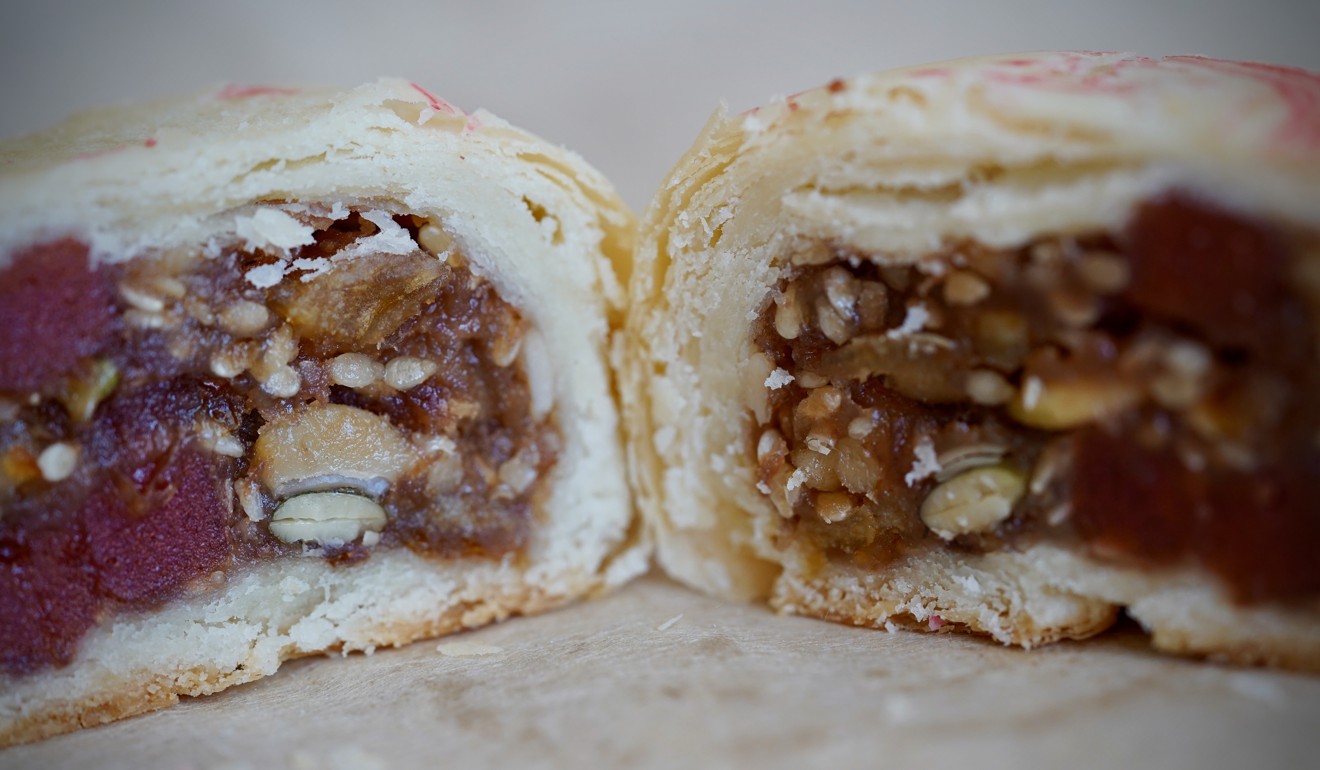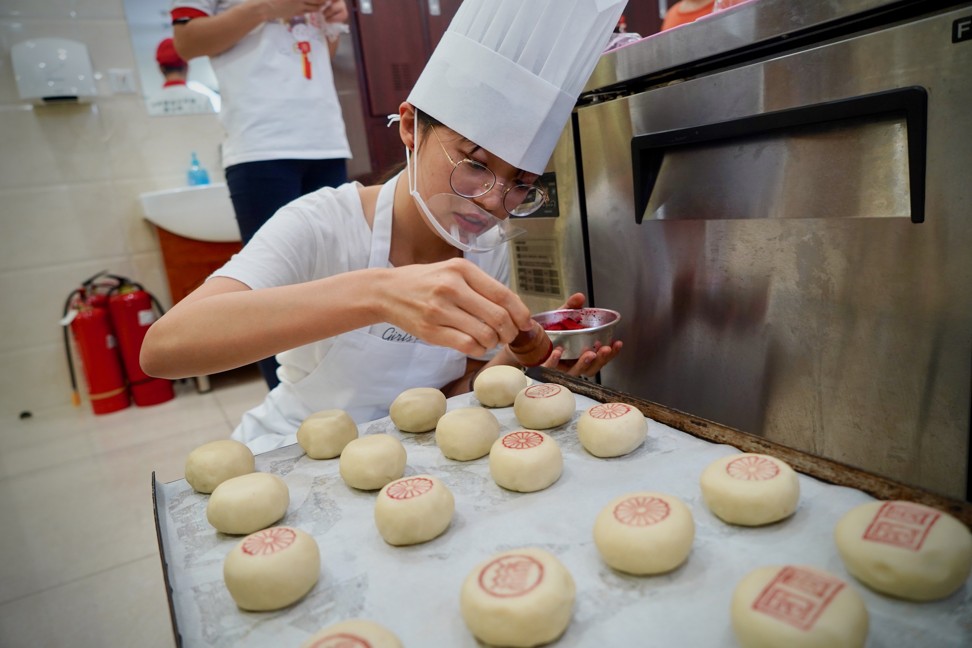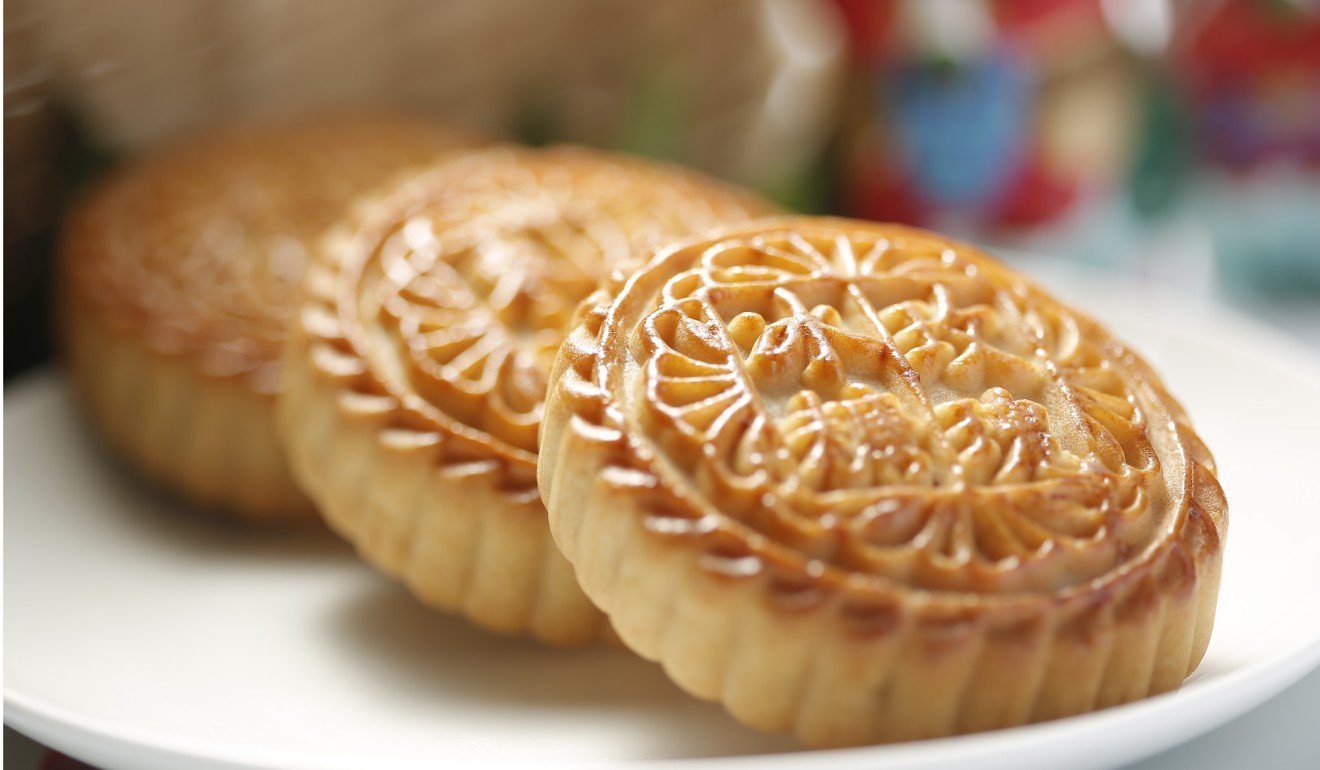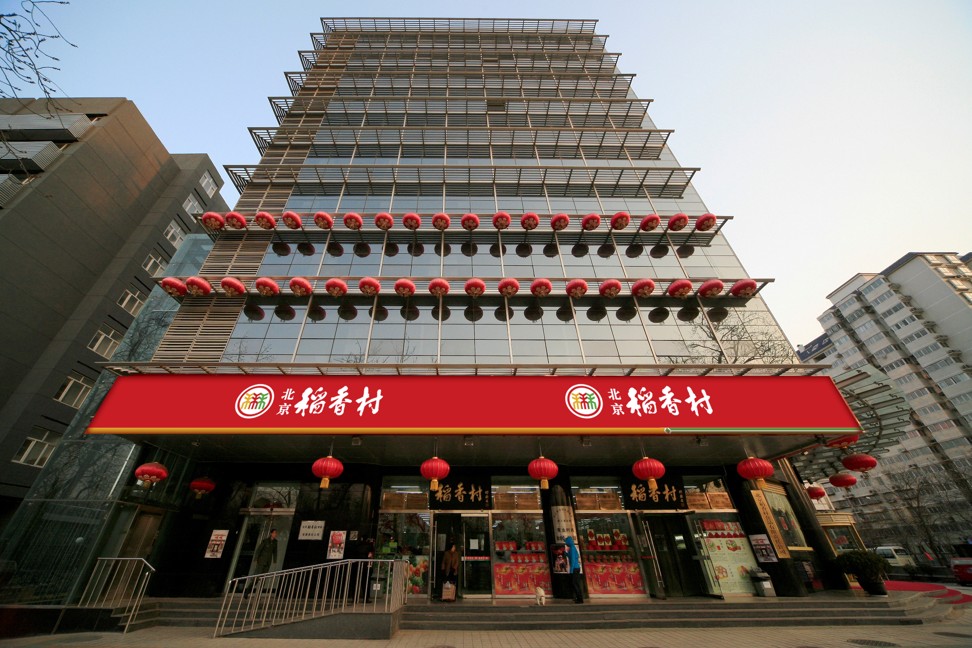
Which mooncake is your favourite, red or white, sweet or savoury? We talk to an expert about the famous snack
- A Chinese tradition with a legendary backstory, mooncakes come in many different styles
- We talk to a renowned Beijing pastry chef about the origins and variations of the festive treat

The Chinese Mid-Autumn Festival, which traditionally sees families and communities reunite to enjoy a feast and express gratitude to Mother Earth for the harvest of summer crops, falls on the 15th day of the eighth month in the lunar calendar, when the moon is at its fullest and brightest.
With its roots in both Chinese and Vietnamese cultures, the ancient festival takes place on September 13 this year.
With the festival just around the corner, Beijing is spoiled for choice when it comes to mooncakes. Originating from the Chinese capital, Tianjin and their surrounding areas, Beijing-style mooncakes have various legends behind them.
One concerns Chang’e or the Chinese goddess of the moon, who is said to have sent her rabbit down to earth with a cure after a plague broke out in Beijing.

The two medicines the rabbit brought to earth, one white and the other red, later evolved into zilaihong (red mooncakes) and zilaibai (white mooncakes).
Deep brown, the filling for zilaihong includes red sugar, nuts, melon seeds, peach seeds and dried orange peel. Zilaibai, made with white sugar, has fewer filling ingredients, including osmanthus and hawthorn.
At Daoxiangcun, a century-old pastry brand with around 200 outlets in Beijing and more than 400 distribution points in other parts of China, suede mooncakes are the most popular Beijing-style mooncakes.
Yu Bojun, senior bakery chef at Daoxiangcun, says suede mooncakes have an imperial background.
“They were beloved snacks of Qing dynasty’s Empress Dowager Cixi. She named it fan mao mooncake. Fan mao means ‘swelling feather’ which describes the flaking exterior of the puff pastry.”
Folklore claims that when a giant suede mooncake was presented to the dowager, she was not pleased with its appearance. In a fit of rage, she banged the table, which sent the cake’s white skin flakes up in the air like goose feathers. Delighted by the scene, she named the cake fan mao on the spot.

Yu said two layers of skin have to be made separately for the mooncake.
“The first layer is made with lard, dough and water. The skin has to be soaked in iced water for 50 minutes. The second puff layer is made with lard, dough and milk powder. The delicate process of making the skin gives it a melt-in-the-mouth texture. The fillings include red bean paste, nuts and fruit.
“Due to the popularity of the suede mooncakes, we have launched two new versions this year, one with rose petals and another with five nuts.”

Compared to southern mooncakes – the type you find in Hong Kong – Yu says northern or Beijing-style mooncakes are sweeter.
“Southern ones, like fresh meat and ham mooncakes, tend to be salty. Northern mooncakes have fillings like date and red bean paste which make them sweet.”
While northern mooncakes look plain, with usually nothing more than a brand chop stamp on the top, southern ones often boast delicate designs showing Chinese calligraphy or Mid-Autumn Festival motifs, such as the rabbit. Classic sweet Cantonese mooncakes come with reddish-brown crust, lotus seed filling and salted egg yolks, which are said to represent the moon. Their dough is made of golden syrup and peanut or vegetable oil, with kansui, (lye water) making the mooncake skin tender.

Originating from China’s Guangdong and Guanxi provinces, Cantonese-style mooncakes are the most popular and widespread around the world.
Among them are those from Chaoshan, a region in the east of Guangdong province covering cities of Chaozhou, Jieyang and Shantou. They have a heavy and buttery aroma that makes them stand out from other typical Cantonese-style mooncakes. They contain a variety of fillings including taro and red bean paste.
Mooncakes from Chaozhou, a city in Guangdong bordering Shantou to the south, have rich and sweet pastry with crunchy sugar and bean paste fillings.

Hong Kong inspires pastry chefs to come up with many new mooncake concepts, including ice cream mooncakes launched by Haagen-Dazs in 1997, and custard mooncakes, which are similar to French pastries.
Hong Kong is also famous for its snowy mooncakes, also called ice skin mooncakes, developed by Taipan Bakery. With a skin similar to mochi, the delicious Japanese rice cakes made from glutinous short grain rice, the no bake treats replaces the traditional crust with a glutinous rice flour wrapping. The snowy mooncakes have a variety of inventive fillings such as fruit, tea, cheese and even foie gras. Taipan Bakery has produced more than 40 flavours including mango, pomelo and durian.
Yu says Tijiang or pulpy mooncakes are popular in Beijing.
“When making the syrupy skin, a protein solution is used to remove the impurities in the syrup which is frozen and mixed with dough. The skin tastes chewy. The fillings include red beans, sugar-coated roses and citrus rinds.”

Daoxiangcun produces more than 20 types of mooncakes, and Yu says all of them are handmade.
“If a machine is used, the nuts will be shredded into tiny pieces which are not good for the taste. For the delicate kinds like suede mooncakes, we make and bake them on the spot.”
Shi Yan who is in charge of public relations at the bakery, says Daoxiangcun’s Beijing-style mooncakes were included in the Unesco intangible cultural heritage list two years ago.

“Our master chef, Xing Jingcun, has worked for Daoxiangcun for four decades. She has led her protégés at Daoxiangcun to enter national mooncake-making competitions.
“There’s much craftsmanship involved in making the mooncakes which is honed from long years of our chef’s experience. For example, the century-old method of making zilaihong involves the delicate process of imprinting the red circle on the skin. When imprinted on the skin, the circular chop leaves no colour. The circle only shows after baking. Before baking, two tiny holes are made inside the circle to release air so the mooncake won’t burst open during baking. Each mooncake is a labour of love of our chefs.”